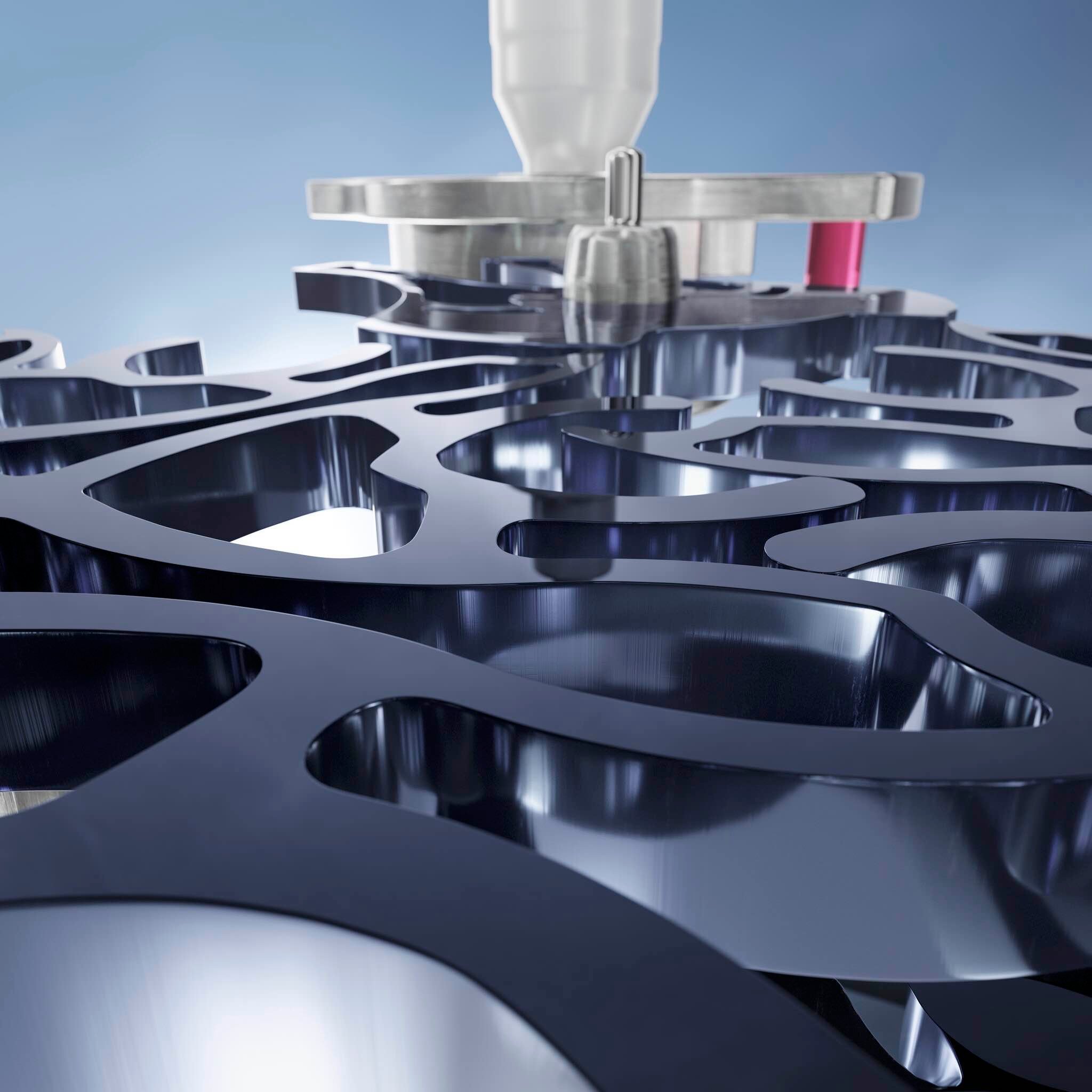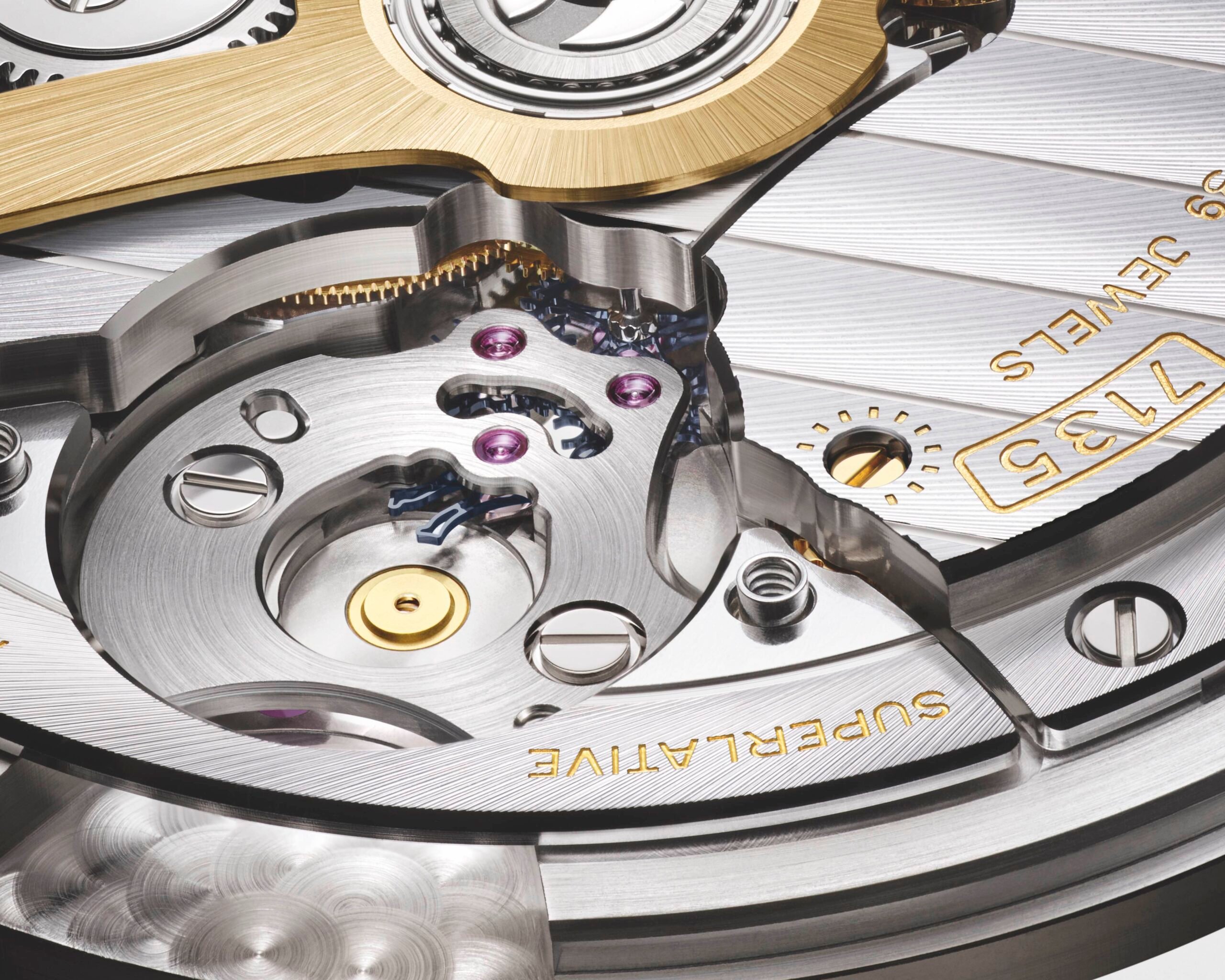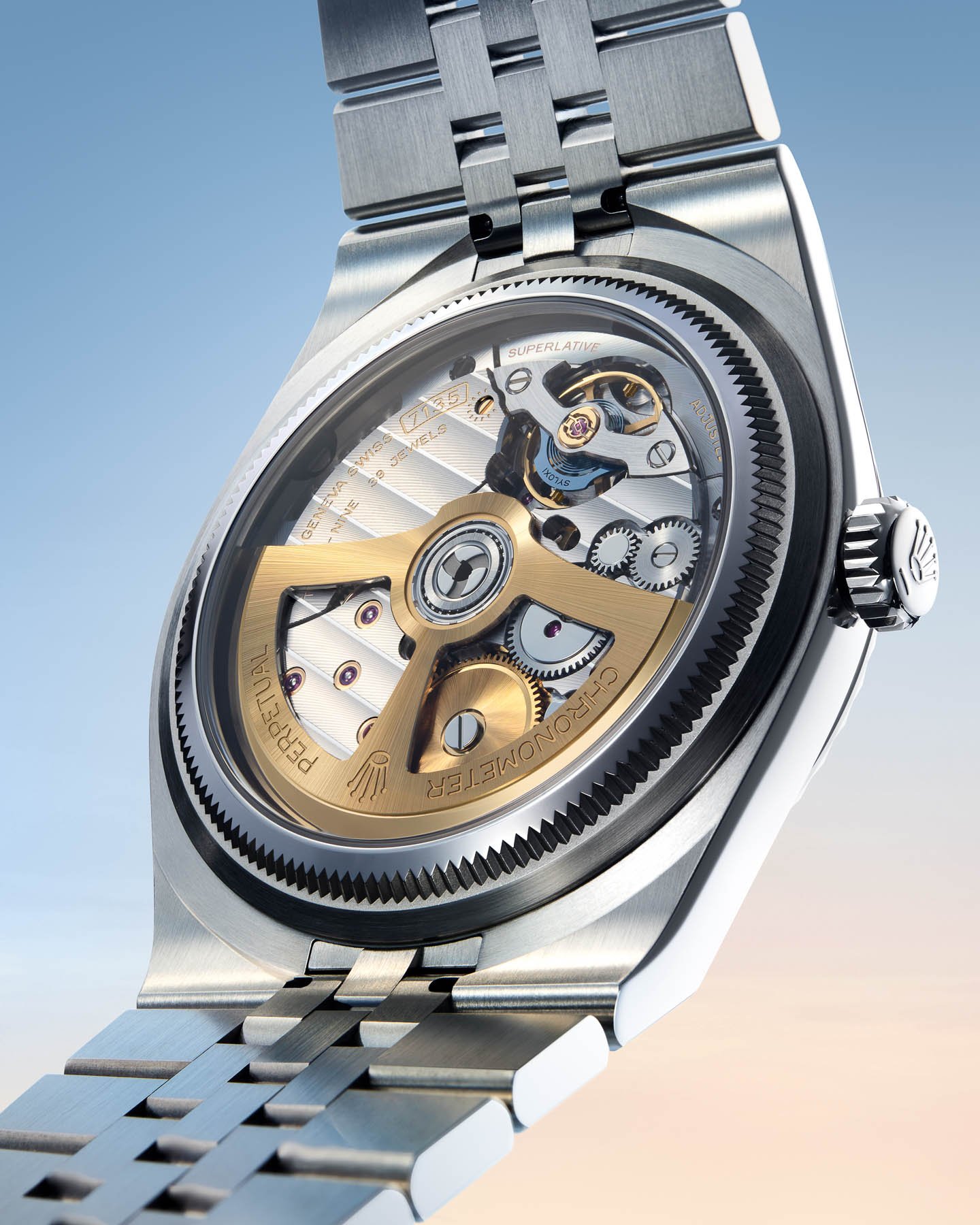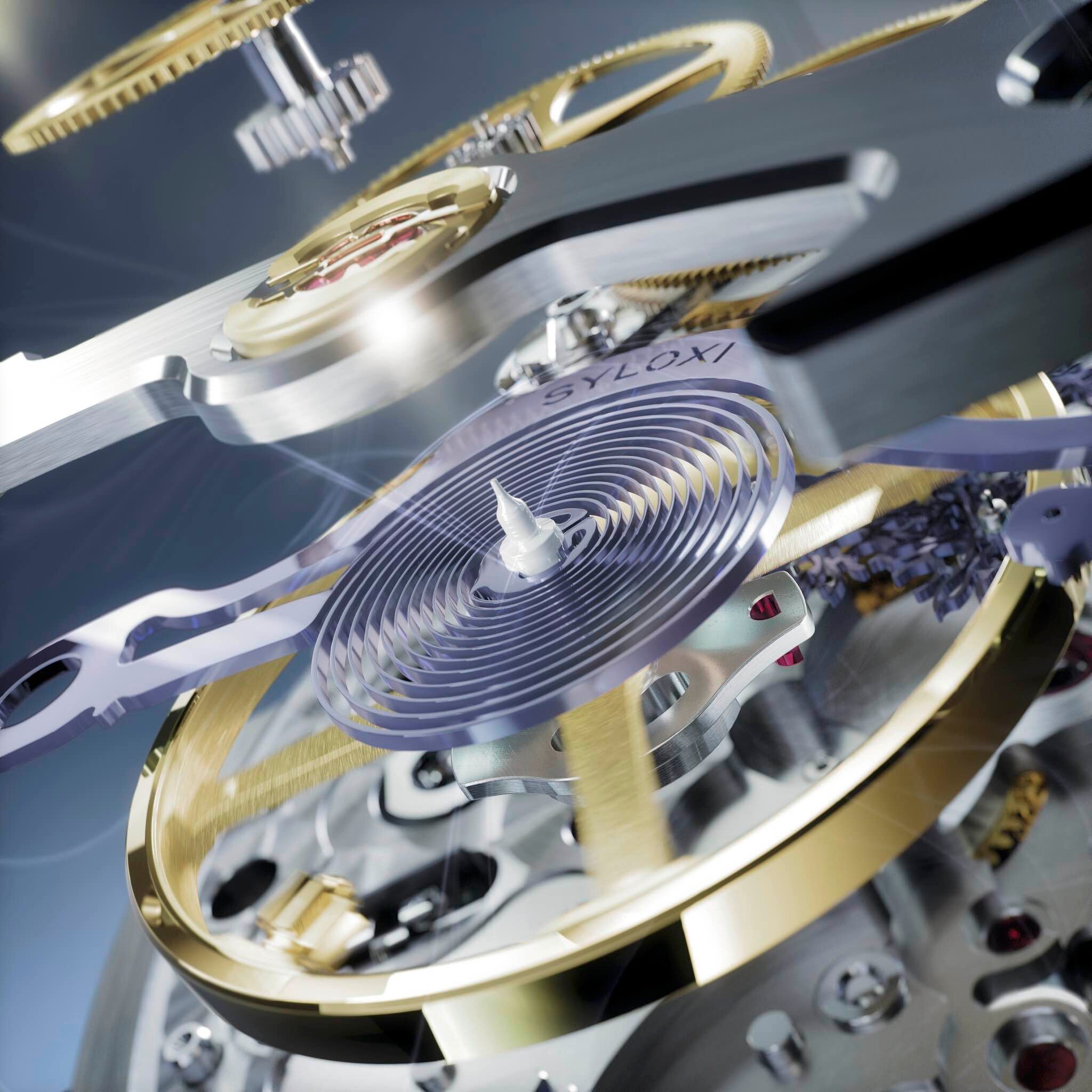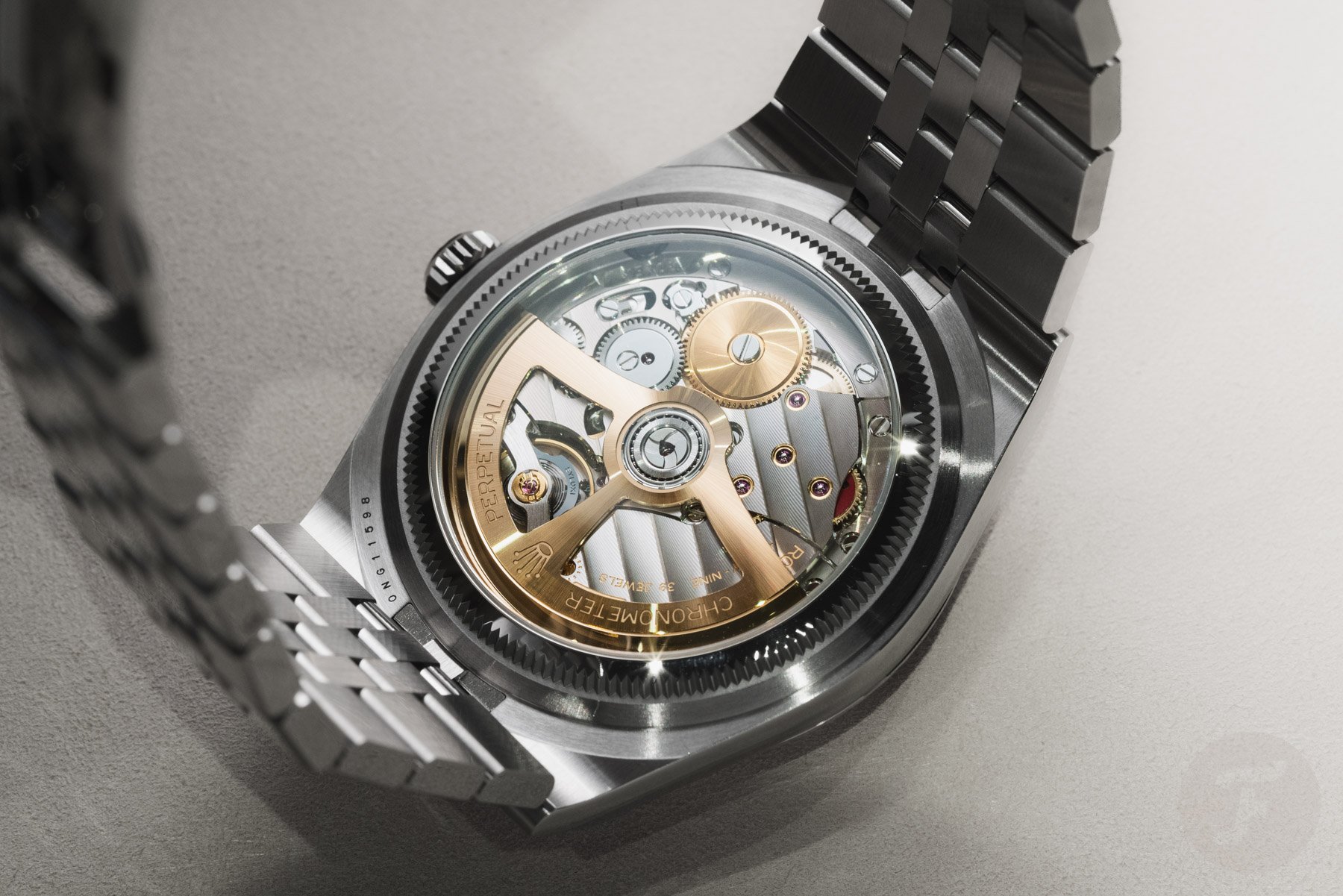An In-Depth Look At The New Rolex Dynapulse Escapement
Rolex surprised friend and foe with a new movement at this year’s Watches and Wonders. While that’s always a relatively big deal in our little horological sub-universe, caliber 7135 represents a particularly big milestone. Rolex developed a brand-new escapement dubbed Dynapulse. We felt it was about time we took a closer look at it.
Of course, the new caliber and this new technology debuted in the hotly debated Land-Dweller. Today, however, I want to focus on the escapement alone. Let’s see why this is such a big deal.
Friction is the enemy
The vast majority of mechanical watches use the traditional Swiss lever escapement. This type of escapement relies on a pallet fork and an escape wheel. The balance wheel rocks the pallet fork back and forth, progressing and halting the escape wheel in discrete steps. This regulating of the escape wheel’s motion is due to friction between the pallet fork’s jewels and the wheel.
Unfortunately, the friction causes wear and reduces efficiency. This is why lubricants are necessary to prevent the parts from eating into each other. Lubricants, however, deteriorate, which is the bottleneck in a movement’s service interval. Also, a whopping two-thirds of the energy from the mainspring is used up rather than transferred to the balance wheel. Simply put, the Swiss lever escapement is anything but efficient.
Other attempts at reducing friction before Dynapulse
Through the centuries, watchmakers have made many efforts to develop a more efficient escapement. Rolex itself has the Chronergy escapement, with altered geometry resulting in about 15% greater efficiency.
Theoretically, the detent escapement is the perfect solution. It provides a direct impulse to the balance wheel with no friction. Unfortunately, the detent is a single-impulse mechanism, which means it doesn’t self-start. It is also too easily whacked out of balance for use in everyday (tool) watches. Breguet’s natural escapement can be (poorly) explained as two detent escapements paired together. Without going into too much detail, the mechanism introduces new inefficiencies.
George Daniels then took the natural escapement and redesigned it without the meshing gears. The resulting mechanism was much more practical for use in watches for daily wear. It reduced the dreaded sliding friction to nearly zero, with the remaining friction being of the radial kind.
Rolex Dynapulse
So, with that little bit of context around Dynapulse out of the way, let’s focus on Rolex’s innovation. Although it looks quite similar to a natural escapement, this is very different. For starters, there is no direct impulse from the wheels to the balance wheel. Instead, the impulse is provided by a rocker that sits between the wheels. Technically, then, Dynapulse has nothing to do with the natural escapement.
The mostly silicon mechanism is about 30% more efficient than a Swiss lever escapement. This allows Rolex to up the beat rate from 4Hz to 5Hz without sacrificing any of the 66 hours of power reserve. That makes the Dynapulse escapement more precise and more efficient. Not bad, eh?
The mechanism could, in theory, work without lubrication as there is no friction. In reality, Rolex applies oil (rather than grease) in the realm of nanoliters. The application requires specialist tools and takes place before mounting the escapement in the movement.
What does Dynapulse mean for the future of Rolex?
I fully expect Dynapulse to become the standard for Rolex. I see no reason why the brand wouldn’t integrate this mechanism into all future movements, much like Omega does with its Co-Axial escapement. Whether that means all future Rolex calibers will be of the high-beat variety remains to be seen. Alternatively, the efficiency could be used to increase the power reserve. If you ask me, Rolex is more likely to pursue accuracy than power reserve, though.
The cynical reader might also point to serviceability. New calibers with Dynapulse may be harder to get serviced anywhere. In this sense, the technology, like all in-house developments across the market, serves to lock people in.
The less cynical reader sees a new step in the pursuit of mechanical timekeeping perfection. Both perspectives are probably valid. In my opinion, it’s fantastic to see that such relatively large leaps forward are still possible and brands still pursue them. It is easy to think the development of mechanical watches has ground to a halt. Inventions such as Dynapulse prove the field is very much alive.
What do you think of the Rolex Dynapulse escapement? Let us know in the comments below!

